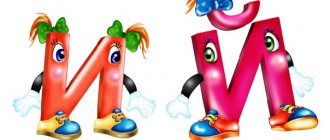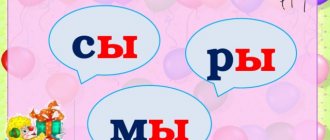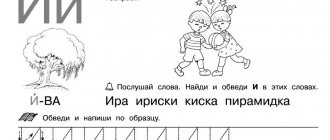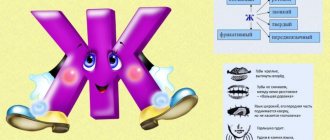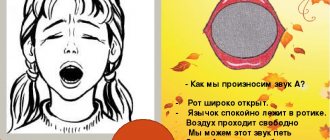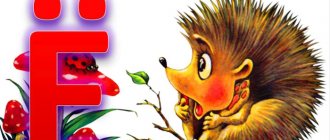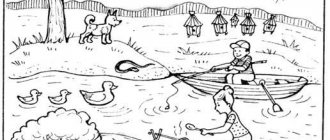Collocations (134)
- skirt year
- jersey skirt
- jewelry store
- jewelry products
- jewelry work
- jewelry making
- jewel
- Jewelry Art
- jewelry
- jewelry
- jewelry minerals
- Jewelry
- jewelry shop
- southwest Annapurna
- Yugorsky Shar
- vale of sorrow
- vale of tears
- vale of sorrow
- vale of tears
- South Australia
- South America
- South Vertushka
- South Hydra
- South Dakota
- South Carolina
- South Korea
- Southern Crown
- southern belle
- Baja California Sur
- South Ossetia
- Southern Fish
- South Tarawa
- South Africa
- south polar continent
- south polar continent
- southern sun
- southerly winds
- southern stars
- southern lands
- southern regions
- southern regions
- Southern Pyrenees
- southern limits
- southern countries
- South Shetland Islands
- Southern Bug
- South wind
- south breeze
- South Vietnam
- South Illimani
- South Yemen
- South Kozlenets
- South Crab
- South Cross
- South ocean
- Southern Donkey
- South Island
- Southern Triangle
- Julian calendar
- Julian chronology
- fussed too much
- Julidochromis Marliera
- Julidochromis ornathus
- gallows humor
- young lady
- young lady
- young maiden
- young girl
- young girl
- young girl
- young soul
- young woman
- Young lady
- young bride
- young lady
- young couple
- young talent
- young heart
- young creature
- youthful love
- teenage years
- youthful summers
- adolescence
- early years
- young girls
- young girls
- young maidens
- young women
- young summers
- young age
- young genius
- young correspondent
- young Leninist
- young naturalist
- young artist
- legal literature
- legal science
- legal basis
- legal liability
- legal support
- legal assistance
- legal practice
- legal nature
- legal force
- legal system
- legal service
- legal entity
- law firm
- legal affairs
- juristic documents
- legal entities
- legal norms
- legal grounds
- legal consequences
- legal services
- legal facts
- legal address
- legal act
- legal aspect
- legal document
- legal representative
- legal process
- legal status
- legal fact
- legal center
- legal action
- legal meaning
- entity
- legal support
- legal basis
- legal right
- legal support
- Jurassic period
- Yue language
On this page you can find the most popular words starting with "yu" (at the beginning of the word - Yu). The list is sorted alphabetically. You can add your options in the comments. If you click on a word, its synonyms and meanings will open.
See also: words containing Y.
- The search took 0.005 seconds. Remember how often you look for something to replace a word with? Bookmark sinonim.org to quickly search for synonyms, antonyms, associations and sentences (press Ctrl+D).
MAGAZINE Preschooler.RF
Goals:1. Continue teaching children to conduct sound analysis of words.
2. Introduce the vowels “Yu” “yu”; the letter "Yu" means two sounds - YU.
3. Learn to make a sentence of 3 words with the conjunction “I”.
Progress of the lesson
Hello hands, clap, clap, clap, Hello legs, clap, clap, clap.
Hello cheeks, smack, smack, smack,
Chubby cheeks splash Hello teeth Hello lips Hello guests, hello.
Pochemuchka and Dunno came to visit us again. Their friend Tube was in trouble and asked his friends to help him. But since Dunno and Pochemuchka are just learning, they decided to ask you for help again. Let's help Pochemuchka and Dunno rescue their friend from trouble?
To do this you will have to complete some tasks.
Task No. 1
You must end the sentence with a word that begins with the sound “z”
1. They painted (the fence) at the zoo
2. A cowardly (hare) ran across the field
3. They hung a (lock) on the gate
4. Zina has snow-white (teeth)
5. Zoya opened a beautiful (umbrella)
6. Mom hung new (curtains)
Well done, you completed the first task. Let's look at the second task.
Task No. 2
But first, answer the questions. What sounds are there?, What are the consonants? Name the object a word and say how many vowels are in this word. The teacher shows pictures to the children. Well done! You completed this task too.
Task No. 3
Guys, stand in a circle. I will throw you a ball and say a word, and you name the first sound in this word. If you named the sound correctly, then return the ball to me. Words: house, bread, car, sofa, swing, sky, dishes, plate, watermelon, magician, flowers. Phys.munutka We kick top, top, top! We clap our hands! We are the eyes of a moment! We shoulders chick-chick! One here, two there, turn around. One - sat down, Two - stood up.
Everyone raised their hands up.
One - two, one - two,
It's time for us to get busy.
Task No. 4
Now we will get acquainted with the word spinning top.
The teacher invites the children to listen and say what the first sound in the word is yula (y), reminds that the sound (y) is always a soft consonant, and denotes it with a green chip, then intonationally highlights the sound (u), the children name the sound and Together with the teacher, they designate it with a red chip. Then the teacher pronounces the sounds (yu) several times, explains that if these sounds come one after another, they are designated by the letter yu and replaces the sound chips (yu) with the letter yu. The analysis of the word is continued by a child called to the board. Questions: How many sounds are in the word yula? What vowel sounds are in the word? What is the soft consonant sound? What is a hard consonant?
Now you can independently perform a sound analysis of the word Yura.
Task No. 5
Working on a proposal.
Task No. 6
Did/game “What sound was lost?” The hunter shouted: “Oh! The doors (animals) are chasing me!”
Sits firmly in the garden
Orange cap (turnip).
The lazy man is lying on a folding bed, gnawing, crunching, guns (drying).
The poet finished the line,
At the end I put a barrel (dot).
Guys, thank you for your help, and now it’s time for Dunno, Pochemuchka and Tube to return to their tale
| Next > |
Project “City of Letters” - all about the letter “U” for 1st grade
Project goal: To get acquainted with all the letters of the Russian alphabet and choose your favorite letter.
Draw and talk about her character, as well as behavior in the City of Letters, having learned about her from the works of the textbook “Literary Reading”. Make a letter layout, prepare a report for a speech and a presentation with illustrations. Project execution plan:
- My favorite letter
- Let's make a letter layout from cardboard.
- Character of the letter "Y".
- Poems about the letter "Y".
- Riddles about the letter "Y".
- Text about the letter "U" for the Museum of Letters.
- An example of a finished presentation.
Report to the project
I chose the letter “Y” for the Museum of Letters. Because she is my favorite. Various writers have said a lot of interesting things about this letter.
The word Yula begins with the letter Y, which begins to spin like a top in V. Danko’s poem.
The letter Yu is a vowel and can be sung if desired.
In S. Marshak’s poem, the word Yurok begins with the letter Y, which means a small but nimble bird.
Also, the words Southern, Humor, Youth, Jeweler begin with this letter.
Lesson + presentation on teaching literacy on the topic “The letter U and its sounds. Small letter u"; 1 class
Objectives: To introduce the lowercase letter “yu”, the sound [y'u]; Learn to write the lowercase letter u. Develop fine motor skills of the hand, eye, and spelling vigilance. To promote the development of a healthy lifestyle and relieve fatigue in the classroom, for better learning of the material. Cultivate accuracy in work; interest in the subject. Tasks:
1. To develop the ability to write the lowercase letter “u”; compare, analyze writing; 2. Learn to distinguish the main groups of sounds of the Russian language, highlight their features. 3. Develop the ability to formulate one’s own point of view, express and argue for it; 4. Expand the active and passive vocabulary of children 5. Determine and formulate the purpose of the activity in the lesson with the help of the teacher; 6. Learn to pronounce the sequence of actions in the lesson; 7. Learn to express your assumption (version) based on working with the textbook material;
Equipment: computer or LCD TV (projector), presentation of the letter U, primer, copybook No. 5, notebook for printing.
During the classes.
I. Organizing the class for the lesson. Slide No. 2 The bell rang, the lesson begins! - We have guests today. Let's say hello to them. (The teacher checks the preparation for the lesson.)
1. Motivation for educational activities - The goal of the stage: inclusion in educational activities at a personally significant level, the formation of a personal learning activity - a positive attitude towards school and educational activities - Why did we come to the literacy lesson? - What do we already know about sounds?
2. Updating knowledge and trial learning activities
— The purpose of the stage: readiness of thinking and awareness of the need to build a new way of action, the formation of a regulatory educational system - accept and maintain the learning task
- Let's try to answer them. - What sounds are there? (Working with slide No. 3) - Name the words in which all consonant sounds are soft. Slide No. 4 - What vowel letters indicate the softness of consonants?
3. Identifying the location and cause of the difficulty
The purpose of the stage: identifying and recording the location and cause of the difficulty.
- What do you think, have we listed all the vowels? Let's look for the answer today in class.
4. Construction of the project, reasons for the difficulty.
The purpose of the stage: setting the goal of the educational activity, choosing the method and means of its implementation, forming a communicative UUD - to formulate one’s own opinion.
-Name the topic of the lesson, set goals.
Riddles will help us with this. Listen to the riddles and try to determine which new letter I'm talking about. Slide No. 5
Listen and look carefully at objects and words. Slide No. 6 -Name the objects that you see on the slide. -What do you notice in common in the words spinning top, skirt?
-Who can help me formulate the topic of our lesson? (Children's answers.) -What should we learn in class today? (Children's answers.)
III. Announcing the topic and objectives of the lesson.
Slide No. 7 - Today we will get acquainted with a new letter, find out its secret, learn how to write a new letter, syllables and words with it.
IV. Learning new material.
Work in a notebook for printing p. 47.
— We print the letter y lowercase. (Capital letters are studied in the next lesson)
Slide No. 8 - Isolating the sounds {th, y} in the word YULA - Name all the sounds in the words. [y'ula].) - What sounds do we pronounce at the beginning of these words? ([y'u].) - If we hear the sounds [y'u] nearby, it means the word is written with the letter “yu”.
Slide No. 9. (place the sound on the sound tape) - Think, next to which sounds on the sound tape should the “yu” sound appear? Why? (Next to the sounds “e”, “e”, “ya”, since they denote two sounds at the beginning of a word.)
Working with the textbook p.150.
– Open the textbook on p. 150, consider the new letter. -What does the letter “u” look like? (Children's answers.)
Working in a printable notebook, page 47
Finger gymnastics Preparing the hand for writing Warm-up for the fingers. Slide No. 10-12
– Consider the written “yu”, what elements does it consist of? (From the elements of the letter “n” and the letter “o”.) Work in the Props, p. 33.
Show on slide No. 13, then write on the board for the teacher (Children write after the teacher “in the air” - Work in the Copybook (p. 33, first line).
Teacher’s explanation based on the example: – We write like the letter “n”, the second part - like the letter “o”. The first element is connected differently to the second depending on the subsequent connection: lower or upper. (The letter of the first and second lines is “yu”.)
Physical education lesson slide No. 14 - Work from the textbook. – Read the syllables of the first and third columns in the primer p. 150 (Children read the syllables of the first and third columns of the primer, if the teacher wishes, they can read on slide No. 15)
-Work in Propis. us. 33 (Continued.) slide No. 16 a) - Recording syllables from a written sample. b) - Work according to the textbook p. 150.
– Read the words “humor”, “nimble”, “young man”. What do these words mean? (If the children find it difficult to explain the meanings, the teacher asks them to read the articles in the explanatory dictionary; the bookmarks are made by the teacher in advance.)
• Humor – the ability to show and see funny things. • Nimble – fast, evasive. • A youth is a man in the transitional age from adolescence to maturity.
Joke-physical minute slide No. 17
Work in cursive, slide No. 18 (before writing a word, we find out what it means, and then write it in cursive) • Young is a teenager trained in maritime affairs. • Junior – athlete – young man. • Yunnat is a young man, a teenager, a member of a circle for the study of nature and natural sciences.
— Look at slide No. 19. - Read the names of the dolls. - Read the word that comes from the first letters of the girls’ names. (UNION) - How many syllables? - Which syllable is stressed? - How many letters? - How many sounds? (Five.) - Name the sounds. ([say'us].) – Where is the letter “yu” in the word “union”? (After a vowel.) - Draw a conclusion. (“Yu” denotes two sounds not only at the beginning of a word, but also after a vowel.)
Slide No. 20 Find the extra item. Explain why? Working with the textbook, you can use slide No. 21 - What are these objects (p. 150)? (Chandelier, beak.) - Identify the sounds in these words. ([l'ustra],[kl'uf].)
Independent work. (you can divide the task into groups: Girls indicate sounds in the word “chandelier”; boys - in the word “beak”) (Children in ABC books indicate sounds in words with colored pencils)
Check on slide No. 21.
– What work does the “yu” do in these words? (“Yu” indicates that the consonant sound preceding the letter “yu” in these words is soft.)
– Read the syllables, slide No. 22 – Read the words (columns 3 and 4 in the textbook). What words do you not understand?
slides No. 23, 24 Dunes are sand hills moved by the wind. A ditch is a ditch for draining water along a road. Pole is the point of intersection of the Earth's rotation axis with the earth's surface.
— Work according to the textbook. (page 150.)
-I suggest you read the remaining three columns of words yourself. (p. 150)
Reading words as instructed by the teacher: slide No. 25
– Read the tasty word. (Bun.) – Read the word on slide No. 26. (Polyushko.) How does the word field differ from the word polyushko? slide number 27 -Read the word denoting an object for playing hockey. (Hockey stick) – Read the words that answer the question “which one?” (Beloved, fierce, young.) - Read the words with a meaning unfamiliar to you. (Tube, gateway,.) - Find the meanings of these words in the explanatory dictionary.
slide No. 28 Tube is a metal or plastic tube from which the contents are squeezed out.
slide No. 29 A lock is a structure on a river for the passage of ships.
slide No. 30 Working in the Copybook (p. 33). - Read the words. (beak, cranberry, plus, gumboil) What do the words cranberry, gumboil mean? – What groups would you divide all these words into? (By the number of syllables, spellings, etc.)
Working with text in the textbook on pp. 150-151.
— What cognate words did you come across in the text? slide No. 31 - What part of the word distinguishes the words house. house, house? What is the name of the part of the word that comes after the root?
Read on p. 150 names of friends we will meet today in class. slide number 32
- How do the names of girls sound? (Affectionately) - With what part of the word did the names begin to sound affectionately? (-ushk, -yushk) - Underline the letter “yu” in these names. Give her a description.
VI. Consolidation.
- Let's sum it up.
Work in Propisi, p. 33. slide number 33
- Which letter did you meet? – Reveal the secrets of the letter “u.”
Slide No. 33 - Why do sound players hold hands? (Children's answers) Paint over the shoes of the sound players.
What new did you learn in class today?
(slide No. 33) (-We learned today that the letters e, ё, ya, yu have two sounds when they are at the beginning of a word or after a vowel sound. - We hear the softness of consonant letters in speech, but in writing it is necessary denoted by the letters I, E, E, I, I).
slide No. 34
– Which objects have names that begin with “u”? (Children name words.)
VII. Summarizing. Reflection.
The purpose of the stage: correlation of the purpose of the lesson and its results, self-assessment of work in the lesson, awareness of the method of constructing new knowledge, formation of a regulatory control system - independently evaluate the result of your actions
– How did you feel during the lesson? -What struck you? What upset you?
Continue the sentences:
-I realized that... -It was interesting... -It was difficult... -I wanted... -I did it... -At the next lesson we...
10. Self-assessment, the teacher’s assessment of each student’s work in the lesson, the class as a whole. Evaluate your work in class by drawing a smiley face in the margin of your notebook.
A green smiley if everything was clear to you during the lesson, a yellow smiley if you doubt something or didn’t understand something today, and a red smiley if you didn’t understand anything and you didn’t like the lesson.
Well done! Thank you for the lesson. slide No. 35
Literature 1. Buneev R.N., Buneeva E.V., Pronina O.V. Primer. Textbook for teaching literacy and reading. — 4th ed., revised. - IV Balass; School House, 2010. - 160 pp., ill. (Educational system “School 2100.” Series “Free Mind”). 2. Pronina O.V., Lebedeva E.P., Maltseva O.Yu. Notebook for printing, 1st grade / Ed. R.N._ Buneeva, E.V. Buneeva. - M.: Balass, 2011. - 64 p., ill. (Educational system “School 2100”). 3. Pronina O.V. My magic fingers. Copybooks for first-graders for the textbook “Primer” in 5 notebooks. Notebook No. 5 /Under scientific. ed. R.N. Buneeva, E.V. Buneeva. — Ed. 5th, rev. - M.: Balass; School House, 2010. - 48 p. (Educational system “School 2100”)
